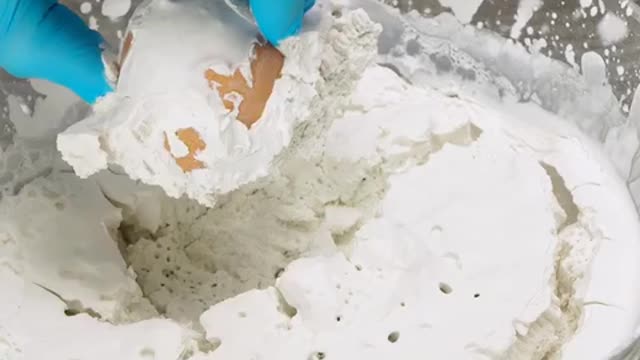Premium Only Content

Boil egg with chemistry | Experiment is dangerous | Do not attempt it.
Experiment to boil an egg with calcium oxide.
Reagents and equipment:
egg;heat-resistant bowl;calcium oxide;
water.
Pour some calcium oxide into a heat-resistant bowl. Place an egg on top and press it slightly into the powder. Fill the bowl with water. The mixture quickly heats up and boils. When the reaction stops and the mixture cools down, retrieve the egg and rinse it with water. Peel and cut the egg — it’s now perfectly hard-boiled! Do not eat eggs prepared with this method; they may contain chemicals.
The formation of new chemical bonds sometimes releases a large amount of energy in the form of heat and occasionally light. Reactions that release heat into the surrounding environment are called exothermic reactions. Water reacts with calcium oxide to form calcium hydroxide.
СаО + Н₂О = Са(ОН)₂ + Q
During this reaction, so much heat is released that the liquid boils and the egg is cooked.
Warning! All experiments portrayed in this video are performed by professionals. Do not attempt.
-
 0:12
0:12
Andreevna
3 years agodoing an experiment with a husky
24 -
 LIVE
LIVE
Dr Disrespect
1 hour ago🔴LIVE - DR DISRESPECT - KINGDOM COME: DELIVERANCE 2 - FIRST IMPRESSION
4,018 watching -
 LIVE
LIVE
The Charlie Kirk Show
1 hour agoGaza Thoughts + DOGE The Destroyer | Sen. Schmitt, Benz | 2.5.2025
10,273 watching -
 LIVE
LIVE
Simply Bitcoin
1 hour agoNEW REPORT: Bitcoin ETF Insider Doubles Down on UNTHINKABLE 2030 prediction! | EP 1176
315 watching -
 LIVE
LIVE
The Dana Show with Dana Loesch
1 hour agoTRUMP PLANS TO TAKE OVER GAZA | The Dana Show LIVE On Rumble!
485 watching -
 59:36
59:36
The Dan Bongino Show
3 hours agoTrump Shocks The World With Major Announcement (Ep. 2416) - 02/05/2025
505K790 -
 1:19:04
1:19:04
The Rubin Report
2 hours agoTrump & Netanyahu Shock with Truly Unexpected Plan for Gaza
44.5K50 -
 1:59:23
1:59:23
Steven Crowder
4 hours ago🔴 Trump's Hitlist Grows: USAID, Dept. of Education, CIA, and... Gaza?
316K297 -
 LIVE
LIVE
Grant Stinchfield
1 hour agoThe FBI Withholds 5000 Names of Agents & Employees Who Hunted Down J6'ers
474 watching -
 2:02:40
2:02:40
LFA TV
17 hours agoMA-GAZA STRIP! | LIVE FROM AMERICA 2.5.25 11am
30.8K13